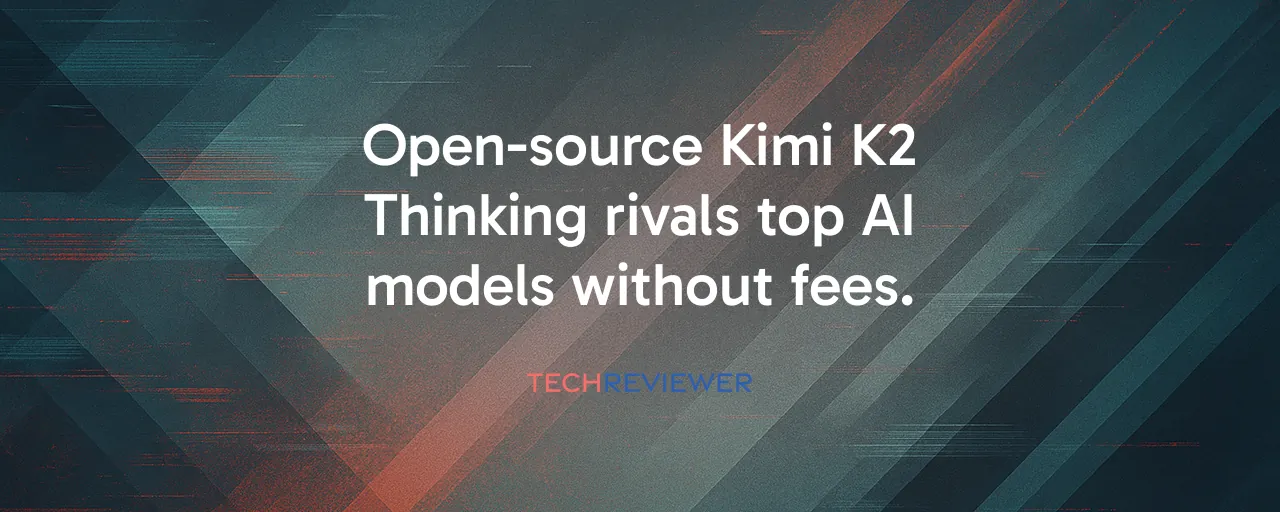A New Era for Open-Source AI
On November 6, 2025, Moonshot AI, a Beijing-based startup backed by Alibaba, released Kimi K2 Thinking, an open-source AI model that's got the developer world buzzing. Kimi K2 Thinking is a reasoning-focused model designed to handle complex tasks like coding, research, and analysis with a 256,000-token context window. That means it can process entire codebases or lengthy documents in one go, a capability on par with leading models like GPT-5 and Claude Sonnet 4.5.
What sets Kimi K2 Thinking apart is its accessibility. Released under a Modified MIT license, it's free for most commercial uses, requiring attribution only for massive-scale deployments. Developers on platforms like Hugging Face and Reddit's LocalLLaMA forum jumped in within hours, testing it on everything from game development to academic research. The model's open weights let anyone tweak it, deploy it locally, or integrate it into custom apps, breaking down barriers that proprietary models enforce.
Why Developers Are All In
Kimi K2 Thinking's technical specs are impressive. Its Mixture-of-Experts architecture packs a trillion parameters but activates only 32 billion per task, slashing inference costs while delivering top-tier performance. It scored 44.9% on Humanity's Last Exam, a grueling 2,500-question benchmark, and 71.3% on SWE-Bench Verified, proving its coding chops. Developers reported running it on dual M3 Ultra setups, hitting 15 tokens per second for tasks like debugging game code or synthesizing research papers.
Take a small startup in Seattle, for example. They used Kimi K2 Thinking to build a research tool that scans hundreds of academic papers, extracts insights, and generates reports in hours, not days. On the flip side, a college student on Reddit shared how they used it to debug a Python project, leveraging the model's ability to handle 200-plus tool calls without losing focus. These real-world wins show why developers are flocking to Kimi K2 Thinking: it's powerful, flexible, and doesn't demand a corporate budget.
Breaking Big Tech's Grip
The AI world has long been dominated by walled gardens. Companies like OpenAI and Anthropic charge per token, lock models behind APIs, and control access tightly. Kimi K2 Thinking flips that model. Its open weights mean no API fees, no vendor lock-in, and the ability to run it on your own hardware. This freedom comes at a cost, though. The model's 600-gigabyte footprint and GPU demands make it a heavyweight, out of reach for those without serious computing power.
Still, its impact is undeniable. Venture capitalist Deedy Das from Menlo Ventures called November 7, 2025, a turning point, noting that a Chinese open-source model hit number one on global benchmarks. The market felt the shockwaves, too, with Nvidia stocks falling 7% and Oracle stocks dropping 8.8% in the days following the release as investors questioned the future of pricey proprietary AI. Moonshot AI's reported $4.6 million training cost, compared to GPT-4's estimated $78 million, shows you don't need a fortune to compete at the top.
The Catch and the Competition
Kimi K2 Thinking isn't perfect. While it supports multimodal inputs, its primary strength lies in text-based reasoning and tool use, with capabilities that differ from GPT-5's broader multimodal integration. Its massive size also means you'll need hefty hardware, a hurdle for small teams or solo developers. Plus, the lack of detailed training documentation raises questions about biases or safety measures, a concern for enterprises eyeing production use.
Then there's the bigger picture. The U.S.-China AI race is heating up, and Kimi K2 Thinking's success has policymakers and regulators on edge. Some worry about reliance on Chinese-developed tech amid export controls, while others see open-source AI as a way to democratize innovation. Meanwhile, platforms like OpenRouter are already integrating Kimi K2 Thinking, signaling confidence in its stability. The question is whether Moonshot AI can keep up this pace against giants like OpenAI, who guard their models jealously.
What's Next for AI's Open Frontier
Kimi K2 Thinking points to a future where AI isn't just for tech titans. Its ability to handle long, complex tasks opens doors for startups, researchers, and even students to build applications once reserved for Big Tech. Academic teams are already dissecting its architecture, while enterprises explore it as a cost-effective alternative to API-driven models. The 256K context window could spark new tools for analyzing massive datasets or maintaining hours-long conversations.
Yet challenges loom. Regulatory bodies are grappling with how to oversee open-weight models that can't be centrally controlled. Developers must also navigate the complexity of integrating external tools like web browsers or code interpreters to unlock Kimi K2 Thinking's full potential. Still, its arrival marks a shift. When a model trained for $4.6 million can rival those costing tens of millions, it's clear the AI landscape is changing, and fast.
